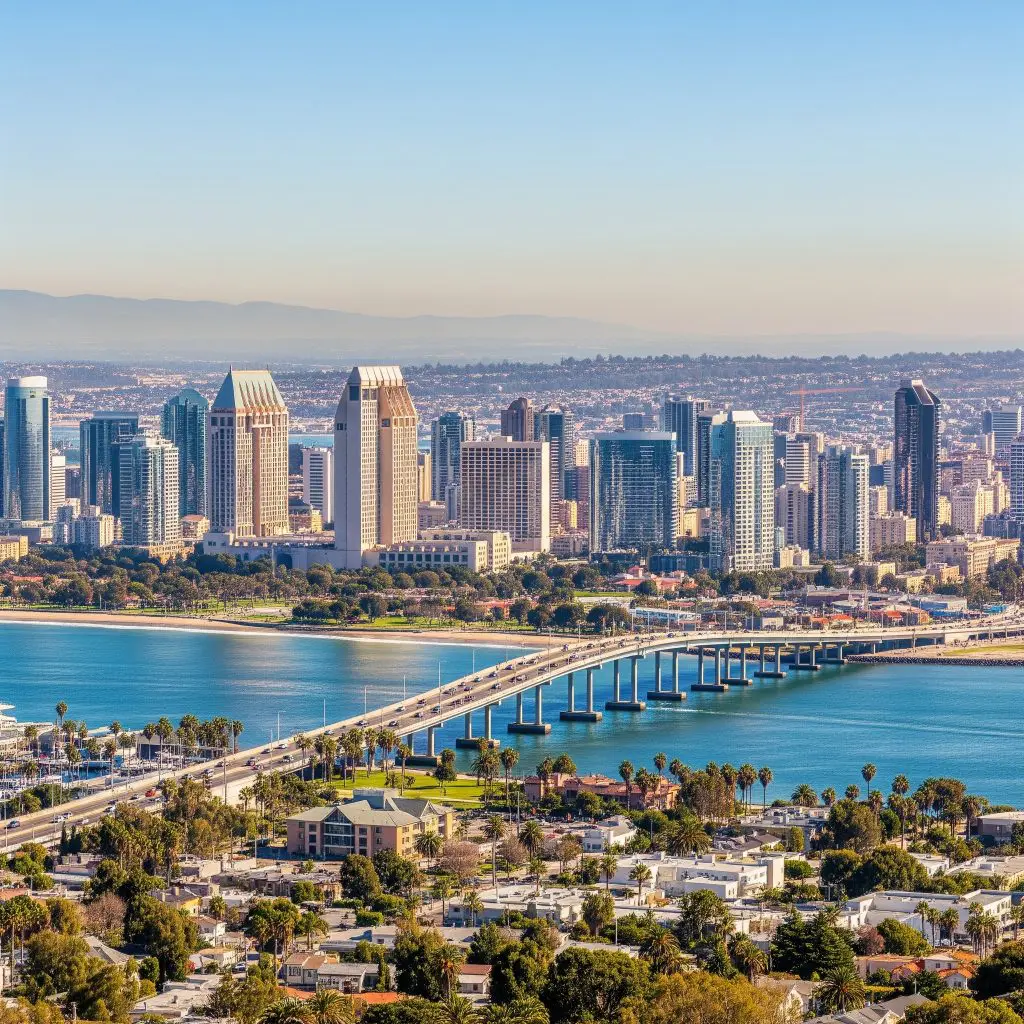Student Loan Forgiveness & Repayment Plans: Complete 2025 Guide for Georgia Borrowers
2025 brings significant changes to federal student loan forgiveness programs and repayment options, impacting thousands of Georgia borrowers. This comprehensive guide covers the latest updates to the SAVE Plan, Public Service Loan Forgiveness (PSLF), and Income-Driven Repayment (IDR) schemes, and highlights Georgia-specific resources. Whether you’re a public sector worker, teacher, healthcare provider, or private sector employee, understanding these opportunities can help you achieve student debt relief faster and more effectively.
- Student Loan Forgiveness & Repayment Plans: Complete 2025 Guide for Georgia Borrowers
- Table of Contents
- Federal Student Loan Forgiveness Updates for 2025
- 2025 SAVE Plan Analysis & Enhancements
- Public Service Loan Forgiveness (PSLF): Georgia in Focus
- Income-Driven Repayment Plans: New Paths in 2025
- Teacher Loan Forgiveness Opportunities
- Georgia-Specific Student Loan Relief and Assistance Programs
- Step-by-Step: Applying for Loan Forgiveness
- Success Stories from Real Georgia Borrowers
- Frequently Asked Questions for 2025
Table of Contents
- Federal Student Loan Forgiveness Updates for 2025
- 2025 SAVE Plan Analysis & Enhancements
- Public Service Loan Forgiveness (PSLF): Georgia in Focus
- Income-Driven Repayment Plans: New Paths in 2025
- Teacher Loan Forgiveness Opportunities
- Georgia-Specific Student Loan Relief Programs
- Step-by-Step: Applying for Loan Forgiveness
- Success Stories from Real Georgia Borrowers
- Frequently Asked Questions
Federal Student Loan Forgiveness Updates for 2025
Federal student loan policy has evolved significantly in 2025, making repayment more manageable and expanding paths to loan forgiveness. Notable developments include:

- Save on a Valuable Education (SAVE) Plan: Full implementation as the most generous federal plan.
- PSLF Overhaul: Improved documentation process, streamlined application, and annual recertification.
- IDR Plan Simplification: Borrowers gain easier access to income-based and family size adjustments.
- Targeted Forgiveness: Additional relief for long-term borrowers approaching the 20/25-year mark under IDR.
2025 SAVE Plan Analysis & Enhancements
Georgia borrowers benefit from the SAVE Plan, which fully replaces REPAYE as of July 2024. Key benefits and new changes for 2025:
Need capital? GHC Funding offers flexible funding solutions to support your business growth or real estate projects. Discover fast, reliable financing options today!
Test Your Expertise: The Complexities of the 1031 Exchange

As a sophisticated real estate investor, you understand that the 1031 Exchange is a cornerstone strategy for tax deferral and wealth accumulation. But beyond the basics, the intricacies of the 1031 Exchange rules can pose significant challenges. This quiz is designed to test your in-depth knowledge and highlight critical nuances that separate casual investors from true experts in 1031 Exchange transactions.
Instructions: Choose the best answer for each question.
⚡ Key Flexible Funding Options
GHC Funding everages financing types that prioritize asset value and cash flow over lengthy financial history checks:
-
Bridge Loans: These are short-term loans used to "bridge the gap" between an immediate need for capital and securing permanent financing (like a traditional loan or sale). They are known for fast closing and are often asset-collateralized, making them ideal for time-sensitive real estate acquisitions or value-add projects.
-
DSCR Loans (Debt Service Coverage Ratio): Primarily for real estate investors, these loans are underwritten based on the property's rental income vs. debt obligation ($\text{DSCR} = \text{Net Operating Income} / \text{Total Debt Service}$), not the borrower's personal income or tax returns. This offers flexibility for those with complex finances.
-
SBA Loans: The Small Business Administration (SBA) guarantees loans offered by partner lenders. While providing excellent terms (long repayment, lower rates), the application process is typically slower than private/bridge funding, often making them less suitable for immediate needs. SBA eligibility heavily relies on the DSCR metric for repayment assessment.
🌐 Learn More
For details on GHC Funding's specific products and to start an application, please visit their homepage:
The Ultimate DSCR Loan for Rental Property Quiz

Are you looking to expand your real estate investment portfolio? A DSCR loan might be the perfect tool to help you achieve your goals without relying on traditional income documentation. Test your knowledge with this quiz to see if you're ready to master the intricacies of a DSCR loan for rental property.
- Lower Monthly Payments: Payments now capped at 5% of discretionary income for undergraduate loans, down from 10%.
- Faster Forgiveness: Balances forgiven after 10 years of payments for original loans under $12,000.
- Interest Subsidy: No interest accrual if you make your required monthly payment, preventing growing balances.
- Early Relief: Borrowers with less than $21,000 in undergraduate debt eligible for forgiveness in under 15 years if enrolled early.
- Inclusivity: Covers Parent PLUS consolidation loans, with new directives for 2025 allowing more parents to access IDR and SAVE.
Example: Savannah State University graduate with $27,000 federal loans, $38,000 annual income: Under SAVE, payments drop to ~$86/month with potential full forgiveness after 20 years if income remains steady.
How to Apply for the SAVE Plan
- Log in to your Federal Student Aid account.
- Navigate to “Apply for an Income-Driven Repayment Plan.”
- Select the SAVE Plan (formerly REPAYE) during your application.
- Submit income documentation and household size.
- Recertify income/household size annually.
Tip: Georgia borrowers with unpredictable incomes (hospitality, education, service sectors) see the most savings under this plan.
Public Service Loan Forgiveness (PSLF): Georgia in Focus
✅ Small Business Resources
-
SBA – Small Business Administration
https://www.sba.gov - SCORE Mentors (Free Mentoring & Workshops)
https://www.score.org - Small Business Development Centers (SBDC)
https://americassbdc.org
Are You an SBA Real Estate Loan Expert?

Test your in-depth knowledge on using SBA Loans for owner-occupied commercial Real Estate acquisition. These questions delve into the critical details that can impact your business's growth and financial strategy.
PSLF remains a cornerstone for Georgia’s public sector employees—teachers, government, and nonprofit staff.
- Qualifying Employers: State agencies, University System of Georgia, city governments, and certified 501(c)(3) organizations.
- Payment Updates: Only 120 qualifying monthly payments needed (10 years) under a qualifying repayment plan like SAVE or PAYE.
- 2025 Process Improvements: Automated employer certification via Federal Student Aid’s PSLF Help Tool, improving recertification and tracking of payments.
- Retroactive Credit: As of March 2025, certain payments previously missed due to forbearance or misclassification now count towards 120-payment requirement, under the “One-Time Payment Adjustment.”
✅ Real Estate Investor Resources
-
AirDNA (Short-Term Rental Data)
https://www.airdna.co - Rentometer (Rent Comps)
https://www.rentometer.com - Zillow Research & Data
https://www.zillow.com/research
DSCR Loan IQ Quiz!

Test your knowledge of Debt Service Coverage Ratio (DSCR) loans!
Example: Atlanta Public Schools teacher with $64,000 in Direct Loans: After 120 payments on the SAVE plan, full balance forgiven, regardless of amount—potential savings exceeding $35,000 after 10 years.
How to Apply for PSLF
- Consolidate non-Direct Loans into a Direct Loan if needed via studentaid.gov.
- Enroll in a qualifying repayment plan (SAVE or another IDR plan).
- Annual submission of the PSLF Form with employer certification.
- Track qualifying payments using the PSLF Help Tool.
- Apply for forgiveness after 120 qualifying payments (must be employed full-time in qualifying employment throughout).
Tip: Georgia’s robust state university system and health networks create abundant PSLF-qualified jobs.
Income-Driven Repayment Plans: New Paths in 2025
Income-Driven Repayment (IDR) plans adjust monthly payments to your earnings and guarantee forgiveness after 20–25 years. 2025 introduces these updates:
- Expanded Eligibility: Most federal loans, including some previously excluded FFEL and Perkins Loans (after consolidation), now qualify.
- SAVE Is Now Default IDR: Automatic placement on SAVE for eligible applicants (option to switch to IBR, PAYE for certain scenarios).
- Easier Recertification: Consent for secure IRS data sharing for easier yearly income verification.
- Shorter Forgiveness Windows: Borrowers with small original balances or those in public service may see forgiveness in under 20 years.
Popular IDR Plans in 2025
- SAVE Plan: Lowest monthly payments, best for most.
- Income-Based Repayment (IBR): 10% or 15% of discretionary income; older borrowers may still prefer.
- Pay As You Earn (PAYE): 10% of discretionary income; closed to new borrowers, but legacy users retain access.
Example: Augusta healthcare worker, $92,000 in med school debt, earning $55,000: IDR/SAVE drops payment to ~$215/month, clears $56,000 in interest after 20 years, remainder forgiven.
Teacher Loan Forgiveness Opportunities
Georgia K-12 teachers may qualify for up to $17,500 in forgiveness (for math, science, or special ed), or up to $5,000 for other areas, under the Teacher Loan Forgiveness (TLF) program. Key 2025 updates:
- Streamlined certification through school district HR portals integrated with federal systems.
- Expanded eligibility includes more Title I schools and high-need rural schools in Georgia.
- May be combined with PSLF for additional relief (though double-counting payment periods is not allowed).
Step-by-Step Application:
- Teach full-time at a qualifying school for five consecutive years.
- Complete the Teacher Loan Forgiveness Application.
- Submit the completed form, with school HR certification, to your federal loan servicer.
Example: Rome, GA, high school STEM teacher, $38,000 in loans, qualifies for $17,500 TLF after five years—may still be eligible for PSLF for remaining balance after meeting additional PSLF requirements.
Georgia-Specific Student Loan Relief and Assistance Programs
Beyond federal options, Georgia offers several state-level student loan relief and support programs:
- Georgia HERO Scholarship: For military personnel and family members impacted by post-9/11 deployments.
- Georgia Health Care Workforce Loan Repayment: Forgives up to $40,000 for physicians, dentists, nurses, and pharmacists working in-designated shortage areas.
- Governor’s HOPE Scholarship: While primarily for undergraduate tuition, this reduces reliance on loans for Georgia residents meeting GPA criteria.
- State Loan Repayment Program: For mental health professionals and primary care providers, up to $25,000/year (Georgia Department of Community Health).
Contact GAfutures for current state program applications and eligibility.
Step-by-Step: Applying for Loan Forgiveness
General Steps for Federal Forgiveness Programs
- Verify loan types eligible for forgiveness or repayment program (Direct Loans typically required).
- Consolidate ineligible loans using studentaid.gov.
- Enroll in a qualifying repayment plan (SAVE, IBR, PAYE, etc.).
- Submit annual employer or income certifications.
- For PSLF: Submit yearly employer certification and track payment count.
- Once requirements met, apply for official forgiveness (PSLF or relevant program form).
- Confirm tax implications—federal forgiveness is tax-exempt through 2025, but check for any Georgia state tax liability.
Where to Get Help
- Federal Student Aid: Loan details, forms, repayment options.
- GAfutures: Georgia-specific aid programs and counseling.
- Consumer Financial Protection Bureau: Dispute assistance and borrower protections.
Success Stories from Real Georgia Borrowers
- Emory Hospital Nurse, $112,000 in Loans: Enrolled in the SAVE Plan, joined hospital’s PSLF-qualified employment. Saw payments fall from $950/month (Standard) to $350. Full forgiveness after 10 years. “My balance didn’t grow, and the process was easier than I expected.”
- Cobb County Teacher, $46,000 in Loans: Taught in Title I school, received $17,500 Teacher Forgiveness after five years, then completed PSLF for remaining $23,500 after total 10 years—saving $28,000+ in principal and accrued interest.
- Veteran Small Business Owner, Augusta, $39,000 in Loans: After consolidating older FFEL loans and enrolling in IDR, reached the 20-year forgiveness mark in 2025 under the IDR “one-time” adjustment.
Frequently Asked Questions for 2025
- Can I switch to the SAVE Plan now? Yes. All qualifying federal loan borrowers may apply as of January 2025.
- Are forgiven amounts taxable in Georgia? Most federal forgiveness, including PSLF and IDR, is tax-free federally through December 31, 2025. Georgia does not currently tax federal student loan forgiveness, but check annually.
- What counts as a qualifying payment for PSLF? Any full, on-time payment on a qualifying plan made while employed full-time by a qualifying employer. 2025’s “One-Time Payment Adjustment” expands eligible periods retroactively.
- Can I combine state and federal relief? Yes. For example, Georgia’s Health Care Loan Repayment can be layered with federal IDR or PSLF.
- Where to get assistance? Contact your loan servicer, the Federal Student Aid Ombudsman, or GAfutures for personalized help.
Need more guidance? Connect with a certified student loan counselor or explore official resources linked above for Georgia borrowers navigating 2025’s updated loan forgiveness and repayment landscape.
Get a No Obligation Quote Today.



